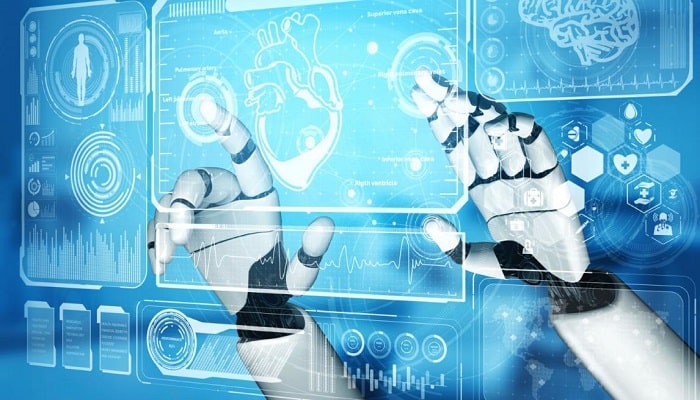The medical imaging and diagnostics industry has been gradually recovering from the challenges it faced during the pandemic. In this comprehensive article, we will delve into how technologies like Artificial Intelligence (AI) are reshaping the industry, the latest trends that are molding its future, and the transformation of medical imaging from a diagnostic tool to an active participant in patient care.
Diagnosis, a critical aspect of healthcare, relies on data collection and intricate image analysis to determine a patient’s health status and chart their treatment course. Diagnostic imaging plays a pivotal role in this process, guiding patients on their journey toward surgery or medical intervention.
Several key factors are expected to drive the growth of the diagnostic imaging market. These include technological advancements in imaging devices, the increasing incidence of chronic diseases, a rapidly aging population, and a growing awareness of the importance of early clinical disorder diagnosis.
The COVID-19 pandemic posed significant challenges to the medical imaging industry, causing delays in the acquisition of capital-intensive equipment such as CT Scanners, X-ray Imaging Systems, MRI Systems, Ultrasound Imaging Systems, Nuclear Imaging Systems, and Mammography Systems. However, the industry has rebounded with a vengeance, with the medical imaging market size estimated to reach US$68.8 billion by 2030, growing at a CAGR of 5.8% from 2021 to 2030, according to a report by Allied Market Research.
One of the driving forces behind this resurgence is the introduction of advanced medical equipment and the growing demand for point-of-care imaging systems across all modalities. Hospitals are increasingly turning to informatics to enhance their radiology departments. Informatics provides valuable data, analysis, and insights on department performance and resource utilization, paving the way for enhanced productivity.
Moreover, there is a heightened need to invest in enterprise imaging technology to centralize patient information. This technology streamlines image acquisition, sharing, and retrieval while optimizing system efficiency and performance. It serves as a pathway to improved sector performance and efficiency.
Several major trends are shaping the medical imaging industry’s future:
- Disruptive Tech: Artificial Intelligence (AI) is not here to replace radiologists but rather to complement their capabilities significantly. AI can analyze images before they reach radiologists, flagging those that require immediate attention. This enhances triage and enables prompt care, ultimately improving clinical outcomes for the entire hospital. Embracing technology-driven changes is pivotal as it aligns medical imaging with the broader paradigm of precision medicine, improving workflows, patient data security, remote accessibility, and image quality.
- Data Analytics: Technological advancements have simplified the selection of imaging hardware and software providers, leading to better image quality, reduced processing time, and increased maintenance efficiency. Hospitals are increasingly focused on leveraging data to boost operational efficiencies and identify areas of waste. Post-pandemic, hospitals are striving for more outcomes with fewer resources, making data analytics indispensable.
- Cloud Technologies: Cloud technology gained prominence during the pandemic due to its swift deployment and reduced dependence on in-house resources. Future adoption of cloud solutions is expected to rise further. Many operators have transitioned to cloud-first approaches, moving primary workloads to the cloud. This shift has become a fundamental value proposition for many vendors.
- Evolving Practice: Radiologists have evolved from working in isolated dark rooms to actively engaging with referring physicians and patients. Increased collaboration among healthcare professionals is poised to enhance clinical outcomes, fostering patient-centric care. Radiology is increasingly centered around patients, with solutions like enabling patient access to images and AI-assisted triaging becoming common. Radiologists are playing a pivotal role in ensuring patients receive timely and appropriate treatment.
Medical imaging technology continues to save countless lives by aiding in the detection and diagnosis of various diseases. This blog has explored some of the most significant trends in recent years that are shaping the medical imaging landscape.
Medical Imaging Market Trends:
Beyond the overarching trends discussed above, check out some specific trends in the medical imaging market:
- Artificial Intelligence (AI): AI’s impact on the medical imaging market is profound, with its value expected to rise from $21 billion to $264.85 billion by 2026. The proliferation of AI technologies necessitates vendors to demonstrate customer ROI in a competitive environment. AI has the potential to revolutionize advanced medical imaging by enhancing the accuracy and speed of decision-making through large-scale scan analysis.
- Augmented Intelligence: Augmented intelligence, distinct from full AI, involves human interactions. It can improve manual physician workflows by offering assistance and insights. Augmented intelligence fosters collaboration between radiologists and oncologists, a trend known as enterprise imaging, with broader implications in healthcare.
- Virtual and Augmented Reality & 3D Medical Imaging: Virtual and augmented reality technologies are finding applications in healthcare, particularly in visualizing medical data. These technologies enable the creation of 3D images from traditional 2D scans, providing enhanced visualization and planning capabilities for medical procedures. Augmented reality can see through obstacles and aid in high-risk operations.
- Nuclear Imaging: Nuclear imaging involves the use of radiotracers to diagnose conditions such as thyroid disease, gall bladder disease, heart conditions, cancer, and Alzheimer’s disease. It offers valuable insights into organ function and disease detection.
- Wearables: Wearable medical devices are becoming increasingly important, especially for monitoring vital signs in the aging population. They are also poised to revolutionize radiology and diagnostic imaging, offering convenient and real-time monitoring capabilities.
The medical imaging and diagnostics industry is undergoing a transformation driven by technological advancements and innovative approaches. These trends are not only shaping the present but also laying the foundation for a more efficient, patient-centric, and technologically advanced future in healthcare.


















